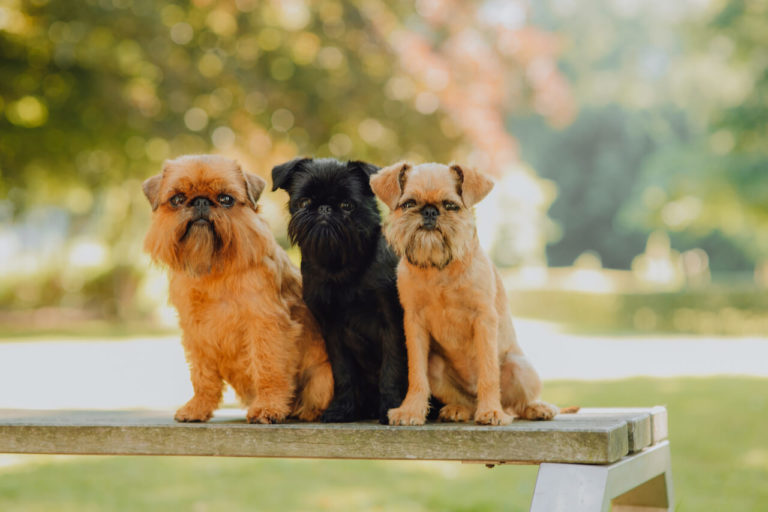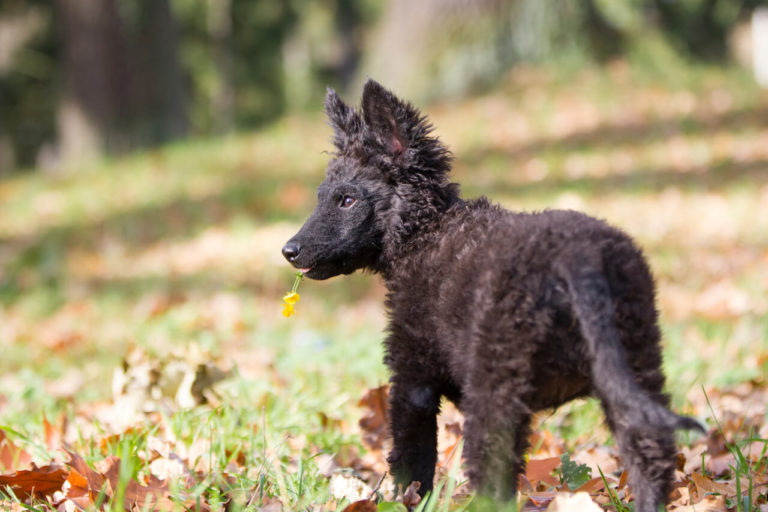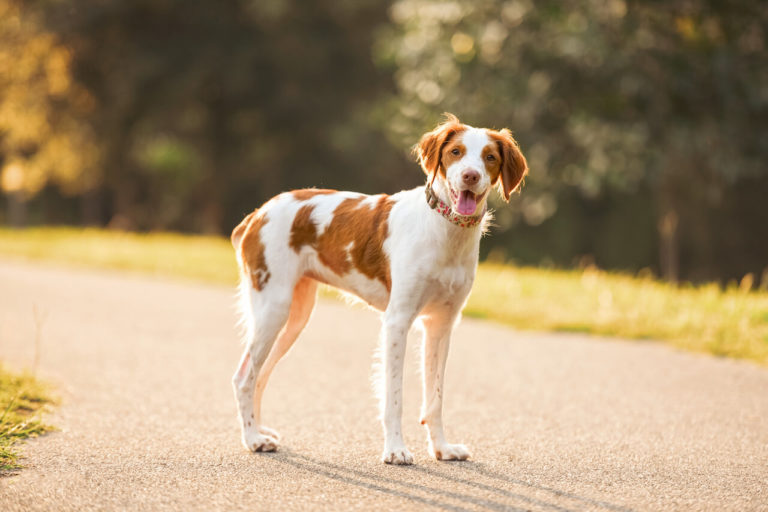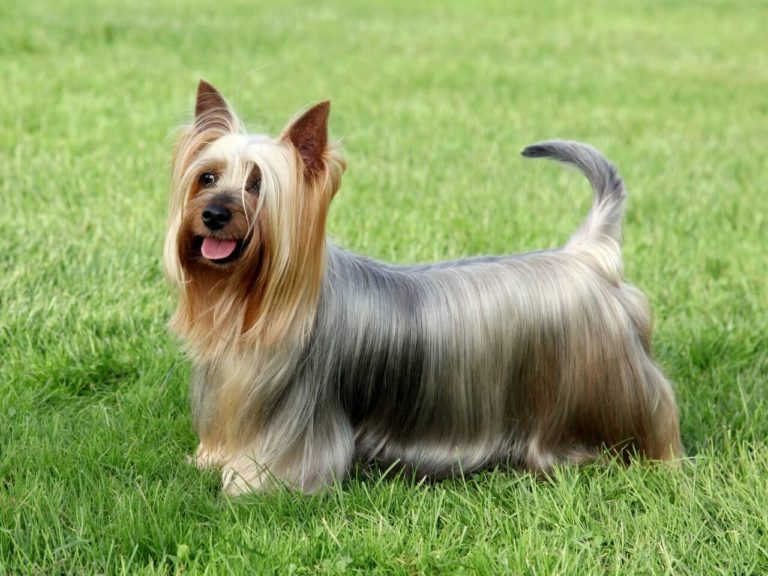






The Tibetan Mastiff is large, calm and confident. However, one should not be deceived by this, because the animals are very vigilant and would defend their family at any time.
As guardians and protectors, the dogs are absolutely reliable. However, the Tibetan Mastiff is not a dog that should be kept by absolutely inexperienced dog owners. It rather needs an experienced owner, and it needs a lot of space.
We explain to you what distinguishes this highly intelligent breed with the imposing stubbornness, how the Tibetan Mastiff gets along with other pets and what you should consider when keeping it.
Breed Description
The Tibetan Mastiff originates from the Himalayas and is considered one of the oldest dog breeds in Asia. The dog has an imposing stature and a strong protective instinct.
To this day, the Tibetan Mastiff is used as a guard dog and herd guard dog. However, the Tibetan Mastiff is also often kept as a family dog. However, these headstrong animals, who love to live in company, need a consistent education from the beginning and are only really in good hands with experienced dog owners.
The Tibetan Mastiff is very intelligent and is sometimes even used as a therapy dog. Since the Tibetan Mastiff is very intelligent and likes to decide for himself what he does or does not do, he needs consistent training.
And this from the very beginning – even puppies should learn the limits of their protective instincts. Comprehensive socialization will ensure that visitors are allowed to venture into this dog’s territory.
The dog breed was used in Tibet by wandering shepherds more than 3,000 years ago and has a very long history.
Origin And Breed History
Originally the Tibetan Mastiff comes from Tibet. In the high valleys and on the slopes of the Himalayas, the dogs were used as shepherd dogs and protectors probably more than 3,000 years ago.
Aristotle described the Tibetan Mastiff , which he said had colossal bones, was muscular, heavy, large-headed and had a broad muzzle. From Marco Polo we know that he encountered the Tibetan Mastiff.
He wrote in his travelogue in the 13th century that the Tibetan Mastiff was as big as a donkey and had an inner voice as powerful as that of a lion.
So we can assume that this dog breed has actually been bred and used in Tibet for a few thousand years. The thick coat of the Tibetan Mastiff is perfectly adapted to the harsh mountain climate of the Himalayas and warms the animals in the cold winter.
In fact, the Tibetan Mastiff first became known in Europe through Marco Polo’s travelogues after 1271. People were immediately fascinated by the stories and legends surrounding the great dogs.
Quickly, the Tibetan Mastiff was considered in Europe as the ancestor of all fighting dogs and all herding dog breeds, even of all rye-like dogs. However, DNA studies have since shown that this is not the case.
The Tibetan Mastiff is still a very original dog, its genetics have hardly been influenced by other breeds even in the last few centuries. The first Tibetan Mastiff came to Europe probably in 1847, when the Viceroy of India (Lord Hardinge) gave such an animal to Queen Victoria of England.
About thirty years later, two more animals were brought to England by the then Prince of Wales (later King Edward VII). in 1931 the Tibetan Mastiff Club was founded. During the Second World War, however, the breeding attempts came to nothing.
In the 1970s, dogs were again imported from Nepal to Europe and America, and since then attempts have been made to establish breeding facilities. In China, the Tibetan Mastiff became a status symbol of rich people during the last years, but this is not the case in Europe.
Breeding in Germany is rather prudent, the requirements are high. The dogs have to pass numerous health tests, and there is not so much money to be made from breeding.
Appearance of the Tibetan Mastiff

With a height of at least 61 cm for the female and at least 66 cm for the male, the Tibetan Mastiff is a large dog. Animals weighing between 36 kg and 72 kg are simply imposing, to which also the dense, double coat contributes.
Around neck and shoulders the coat is even denser and forms here a kind of mane. The Tibetan Mastiff has a very deep voice and sounds correspondingly fearsome when he barks.
However, when the Tibetan Mastiff loses its dense undercoat in the spring and its coat becomes summer thin, the dog looks much leaner and more athletic.
The massive appearance of the dogs should not deceive you, however: The Tibetan Mastiff is very athletic and light on his feet, runs accordingly fast and is agile.
As a watchdog, he is always alert. The small to medium sized ears show you where the dog is focusing his attention.
The Tibetan Mastiff weather-resistant coat is robust and will never look silky or wavy to curly. It is rather rough and hard. The dog can be bred in a variety of colors.
These are the most common mixes:
- Jet black without admixture
- Black with tan markings
- Blue to slate gray
- Blue to slate gray with tan markings
- Gold in all shades and mixtures with and without tan markings
The markings of the Tibetan Mastiff are often in the shape of a small star. They may appear on the chest or on the toes and have all possible shades of color.
Character and nature
The Tibetan Mastiff is a guard dog, and guarding its own territory suits the animal. The dogs are basically suspicious of strangers and very loyal to their own family.
They appear fearless and possess all the qualities that a guard dog needs. These qualities do not need to be reinforced in training, but are naturally present.
However, the Tibetan Mastiff is sometimes a bit too protective and overly concerned with the security and exclusivity of its territory. Young animals should therefore quickly learn their limits.
A peculiarity of these dogs is that they do not always obey. Once they perceive a (perceived) threat, they are deaf to all kinds of commands.
Therefore, the dogs should consistently get to know visitors in the home from the beginning and learn how to deal with guests and other people.
Husbandry And Diet
Attitude
Often the Tibetan Mastiff looks a bit bored, but this should not deceive you: Your dog enjoys being in company. Family is everything to him.
It is very important that the Tibetan Mastiff has family contact and gets close to his humans. He also needs enough exercise. The dogs can be on their feet all day, but they can also cope with several short walks – if they have room to move around at home.
They don’t need to run fast, but they do need enough space and should be able to go outside into the large, fenced garden as the mood takes them. The Do Khyi cannot be kept simply in the house, there he lacks the movement.
Outdoors, the Tibetan Mastiff is very lively and playful, but indoors it is rather cozy and quiet. The animals do not bark unnecessarily and get along very well with children
However, they should never be left alone with small children, because these dogs are simply big and heavy. They might overreact purely out of their protective instinct.
This is especially true when friends are visiting and the children’s games get a little wilder. The Tibetan Mastiff then very quickly feels he must intervene and protect “his child”.
Your Tibetan Mastiff is tolerant and loyal to other pets and your family. He is very affectionate and patient with everyone in the household, loves to play with children and wants to be challenged every day. If you want to challenge your dog in a way that is appropriate for his species, dog sports are a great idea.
The Tibetan Mastiff is also enthusiastic about agility, likes tracking and trailing. The dogs can be trained as rescue dogs and therapy dogs and also like to guard herds. It is important that your Tibetan Mastiff does not get bored.
Diet
Many breeders give tips to dog owners on what to feed the dogs. This can go as far as a precise diet plan for the first few weeks.
However, Tibetan Mastiff puppies should be slowly switched from puppy food to adult food after about a year. This is because the animals need the lower energy density to keep from growing too fast. The Tibetan Mastiff does not need large portions, but rather high quality food.
It is important that the animals receive all nutrients in sufficient form. If the portions are too large each time the food is given, the dogs can develop gastrointestinal problems Also, the dreaded gastric distention is due to too large amounts of food.
Education And Care
Education
The Tibetan Mastiff is extremely protective and always interferes when strangers even want to talk to “his people”. But early and patient socialization can turn the dogs into sociable and tolerant animals.
Young Tibetan Mastiff should always be confronted with people and animals, should be accustomed to strange sounds and smells. Then the dogs are very calm and sovereign as adult animals. They then do not overreact so quickly.
The Tibetan Mastiff is not suitable for beginners. These dogs are headstrong, and they have an enormous need for protection. This requires a lot of tact from the owner and a very consistent education.
With a little experience and a lot of desire and time, however, the dogs with their fascinating and great personality can be trained very well and are then very loyal companions.
Do not bore your Tibetan Mastiff with demonstrating certain exercises over and over again. Rather, train your dog in a varied way with creative and positive activities. During the first 16 weeks of life, your dog does not need complicated training games.
Puppies are still nervous and fearful in the beginning. It is quite normal that your puppy reacts to you in a negative way and needs to build up its character. Give your dog about four years to develop.
In this time he matures and gets used to everything new with your help, learns the sovereign contact with strange people and other animals.
Grooming
Grooming is easy with the Tibetan Mastiff, but can be very time consuming. The animals should not be bathed or shampooed so often, because this harms them. Brushing, on the other hand, is desirable and necessary several times a week.
You should not underestimate this – the Tibetan Mastiff is big and has a lot of fur. Accordingly long you are busy with the care. Especially during the change of coat you should brush every day, maybe even twice a day.
The dogs lose a lot of fur twice a year, so you also have to brush your apartment more intensively. Ears and teeth of your dog should be checked once a week and cleaned if necessary, the claws may be trimmed once or twice a month if necessary.
Health And Typical Diseases
Tibetan Mastiff breeders in Europe put a lot of emphasis on a healthy constitution. They want to keep the animals healthy. Therefore breeding in this country is done very prudently. Breeding examinations and health tests are a matter of course.
Many breeders and kennels have imposed these requirements on themselves in order to keep the breed as healthy and robust as possible. Therefore, the Tibetan Mastiff has few health problems compared to other dogs.
The typical diseases known for some (even large) breeds do not affect the Tibetan Mastiff. There is one exception, however: hip dysplasia (HD for short) is a problem in the Tibetan Mastiff, as it is in all large dogs.
Life Expectancy Of The Tibetan Mastiff

The life expectancy of the Tibetan Mastiff is about 10 years to 12 years. If you take care of enough exercise and occupation, your dog will rather get older.
This is because the Tibetan Mastiff is a very intelligent animal. The dogs should not be bored and especially should not eat too much.
Buy Dog Breed Tibetan Mastiff
Tibetan Mastiff bitches come into heat only once a year. Responsible breeders give the bitches at least one cycle between litters. This means that you may have to wait a long time for your Tibetan Mastiff puppy.
But in return you can be sure that the dog comes from a responsible and species-appropriate breeding in Germany. The breeders in this country attach great importance to keeping this very special breed as healthy and robust as possible.
A puppy therefore costs at least 1,500 euros, usually considerably more. But a healthy and species-appropriate bred dog should be worth that. Pay attention to the pedigree, in order to exclude inbreeding, and the appropriate breeding papers.
Decision Support
Now you know that the Tibetan Mastiff is not easy to train and needs an experienced owner. Can you be consistent in dog training for years?
Can you keep challenging your pet with new games and situations without boring him with repetitive tasks? You don’t live in a small city apartment, but have a large, fenced property at your disposal?
You have a lot of time and like to spend time with your dog, which you accept as a bodyguard? Then your Tibetan Mastiff will probably be very happy with you.
FAQ About The Tibetan Mastiff
A Tibetan Mastiff is usually very intelligent and alert. He protects his people and territory.
A Tibetan Mastiff cost between 1500 and 1700 euro.
While the Tibetan Mastiff is a reliable dog, it is not suitable for beginners. He is protective of his territory and family and is also ready for defense.
A Tibetan Mastiff is about 61 to 66 cm tall. He needs a lot of space and should not be kept in an apartment.
A Tibetan Mastiff is willing to protect his family, property and territory. The defense can also be aggressive, so this dog should not be kept as a beginner.
A Tibetan Mastiff can be used as a guard. They are sometimes kept as therapy or family dogs. It is important that these animals are not suitable for beginners. They are very stubborn and difficult to calculate.
A Tibetan Mastiff can live up to 12 years.
Sources
https://www.tibethunde-ktr.de/de/content/do-khyi
https://partner-hund.de/hunderassen/hunderassen-von-a-bis-z/do-khyi-tibet-dogge













